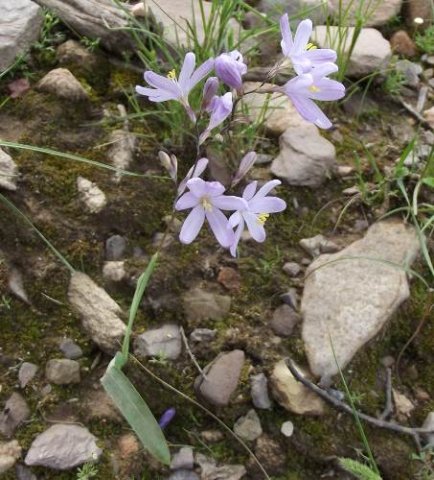Ixia latifolia

Author: Ivan Lätti
Photographer: Louis Jordaan
Ixia latifolia, sometimes called the African kalossie, is a cormous perennial reaching heights from 20 cm to 50 cm.
About two sword-shaped leaves showing parallel vein lines are grown from the ground in a fan-shape, 2 cm wide with pointed tips. A smaller leaf higher up sheathes the stem. The specific name, latifolia, is derived from the Latin words late meaning broad and folia meaning leaves, referring to the leaf width.
The flowering stem is often branched, the flowers growing in a spike or spikes, spirally arranged. The membranous bracts below the flowers have acute toothed margins.
The flowers are pink to mauve, sometimes pale to near white or white. The fragrant flowers are about 2 cm in diameter and the wide tube about 2 cm long. The stamens are exserted. Flowering happens in spring.
The species distribution is in the Western Cape from the Koue Bokkeveld to Paarl, Worcester and the west of the Little Karoo, where the photo was taken.
The habitat is arid fynbos, renosterveld and scrubveld in clay, loam and sandy soils at higher elevations. The species is not considered to be threatened in its habitat early in the twenty first century (Vlok and Schutte-Vlok, 2015; Bond and Goldblatt, 1984; iNaturalist; https://www.pacificbulbsociety; http://redlist.sanbi.org).

